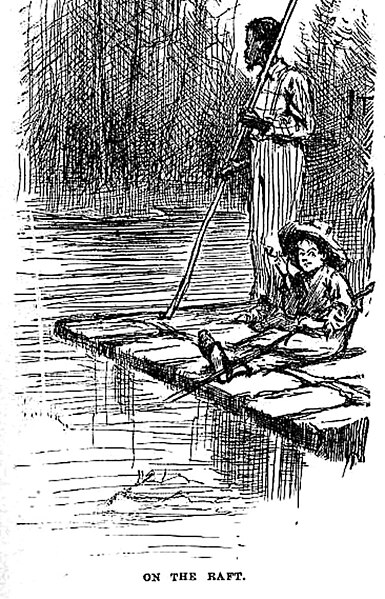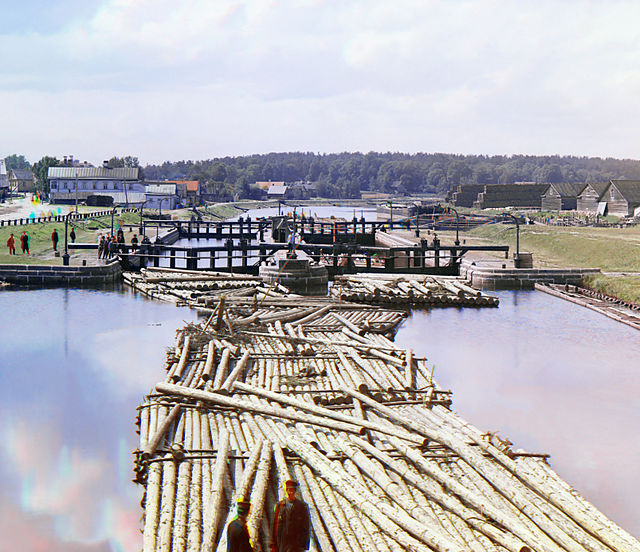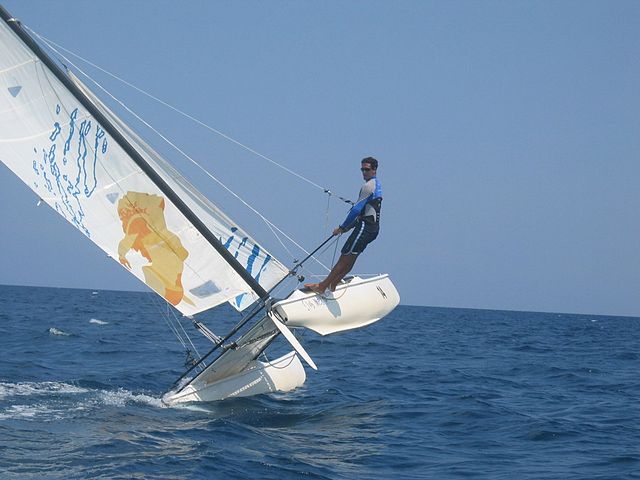A raft is any flat structure for support or transportation over water. It is usually of basic design, characterized by the absence of a hull. Rafts are usually kept afloat by using any combination of buoyant materials such as wood, sealed barrels, or inflated air chambers, and are typically not propelled by an engine. Rafts are an ancient mode of transport; naturally-occurring rafts such as entwined vegetation and pieces of wood have been used to traverse water since the dawn of humanity.
Traditional raft, from the 1884 edition of Adventures of Huckleberry Finn
Sketch by F.E. Paris (1841) showing construction of a native Peruvian balsa raft
Lumber rafts on the Peter I Canal. Early 20th-century picture by S. Prokudin-Gorsky.
Three Arks for a log drive on Pine Creek, in Lycoming or Tioga County, Pennsylvania. The left ark was for cooking and dining, the middle ark was the sleeping quarters and the right ark was for the horses. The arks were built for just one log drive and then sold for their lumber. The line of the Jersey Shore, Pine Creek and Buffalo Railway can be seen on the eastern shore: the mountainside behind it is nearly bare of trees from clearcutting.
Floats are airtight hollow structures, similar to pressure vessels, designed to provide buoyancy in water. Their principal applications are in watercraft hulls, aircraft floats, floating piers, pontoon rhinos, pontoon causeways, and marine engineering applications such as salvage.
The British racing seaplane Supermarine S.6B (1931)
An anchored raft-like platform used for diving, often referred to as a pontoon
Floats on a Cessna 208 Caravan 1 floatplane, Gloucestershire Airport, England (2017)
Small open catamaran.








